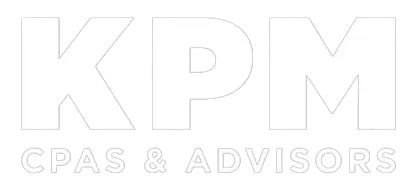Starting a business can be rewarding, but the financial learning curve is often steep. The U.S. Bureau of Labor Statistics estimates that one in five new businesses will fail within one year of opening, roughly half will close within five years, and less than a third will survive for 10 years or longer. A common thread in early failures is weak financial planning and oversight.
A comprehensive, realistic budget can help your start-up reduce growing pains and thrive over the long run. However, accurate budgeting can be difficult when historical data is limited. Here are some tips to help jumpstart your start-up’s budgeting process:
Start At The Top
First, forecast the top line of your company’s income statement — revenue. How much do you expect to sell over the next year? Monthly sales forecasts tend to become more reliable as the company builds momentum and management gains experience. But market research, industry benchmarks, or small-scale test runs can help start-ups with limited history gauge future demand.
Next, evaluate whether you have the right mix of resources (such as people, equipment, tools, space, and systems) to deliver forecasted revenue. If your current setup doesn’t support your goals, you may need to adjust your sales targets, pricing, or operational capacity.
Get A Handle On Breakeven
Many costs — such as materials, labor, sales tax, and shipping — vary based on revenue. Estimate how much you expect to earn on each $1 of revenue after subtracting direct costs. This is known as your contribution margin.
Some operating costs — such as rent, salaries, and insurance — will be fixed, at least over the short run. Once you know your total monthly overhead costs, you can use your contribution margin to estimate how much you’ll need to sell each month to cover fixed costs. For instance, if your monthly fixed costs are $10,000 and your contribution margin is 40%, you’ll need to generate $25,000 in sales to break even.
However, don’t be discouraged if your small business isn’t profitable right away. Breaking even takes time and hard work. Once you do turn a profit, you’ll need to save room in your budget for income taxes.
Look Beyond The Income Statement
Next, forecast your balance sheet at the end of each month. Start-ups use assets to generate revenue. For instance, you might need equipment and marketing materials (including a website). Some operating assets (like accounts receivable and inventory) typically move in tandem with revenue. Assets are listed on the balance sheet, typically in order of liquidity (how quickly the item can be converted into cash).
How will you finance your company’s assets? Entrepreneurs may invest personal funds, receive money from other investors, or take out loans. These items fall under liabilities and equity on the balance sheet.
Monitor Cash Flows
Even profitable businesses can run into trouble if they fail to manage cash wisely. That’s why cash flow forecasting is essential. Consider these questions:
- Will your business generate enough cash each month to cover fixed expenses, payroll, debt service, and other short-term obligations?
- Can you speed up collection or postpone certain payments?
- Are you stockpiling excess inventory — or running too lean to meet demand?
Forecasting monthly cash flows helps identify when cash shortfalls, as well as seasonal peaks and troughs, are likely to occur. You should have a credit line or another backup plan in case you fall short.
Compare Your Results To The Budget
Budgeting isn’t a static process. Each month, entrepreneurs should revisit their budgets and evaluate whether adjustments are needed based on actual results. For instance, you may have underbudgeted or overbudgeted on some items and, thus, spent more or less than you anticipated.
Some variances may be the result of macroeconomic forces. For example, increased government regulation, new competition, or an economic downturn can adversely affect your budget. Although these items may be outside of your control, it’s critical to identify and address them early before variances spiral out of control.
Seek External Guidance
Does your start-up struggle with budgeting? We can help you prepare a realistic budget based on past performance, industry benchmarks, and evolving market trends. Contact us to help your small business build a better budget, evaluate variances, and beat the odds in today’s competitive marketplace.

